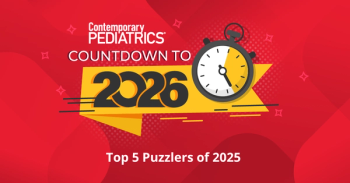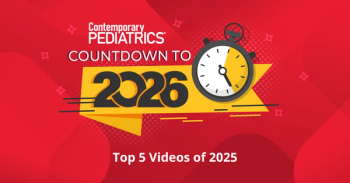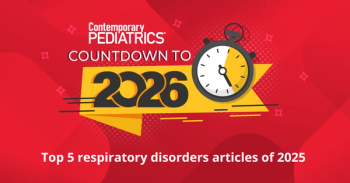
- September 2025
- Volume 41
- Issue 6
Patches of hair loss on scalp
Can you guess the diagnosis?
Case
A healthy 10-year-old boy had relapsing and remitting patches of complete hair loss on his scalp for more than a year. He did not experience any redness or pruritus.
What's your diagnosis?
Alopecia areata
Introduction
Alopecia areata (AA) is a nonscarring hair loss condition that affects approximately 2% of the population worldwide.1 Many of these patients experience the first symptoms during childhood.2 The exact pathogenesis remains unclear; however, there is an understanding of the disease’s autoimmune nature and the impact of environmental and genetic factors.3 Patients who have been diagnosed with AA often have relapses of the disease, and this has an impact on their quality of life. Thus, it is also important for physicians to manage the psychosocial aspect of the disease.4,5
Clinical features
Patients typically present with limited patchy hair loss initially, which is termed alopecia areata. This may progress to severe debilitating conditions involving complete scalp loss (alopecia totalis) or complete loss of body hair (alopecia universalis).6 It is important to note that no scarring occurs in the areas of hair loss. Our patient presented with several patches of hair loss. There was no associated tenderness or erythema.
In practice, 2 scales are used to assess the severity of AA, the Severity of Alopecia Tool (SALT, 0%-100% hair loss) and the Alopecia Areata Scale (AAS). A SALT score greater than 20 is an indication to start treatment.6
The typical trichoscopic dermoscopy observations in AA among children include empty follicular openings and broken hairs, whereas exclamation mark hairs are observed more frequently in children than in adults. Conversely, children exhibit yellow dots less often than adults do.7
AA is termed an orphan disorder; it is vital for physicians to learn that the psychological burden of this disease is often undermined. Children with the disease experience bullying and are faced with social and emotional issues at an age where emotional support is essential to provide care in addition to pharmacological intervention.4,5
Differential diagnosis
The diagnosis of AA is made by physical examination and history. The following diseases may also present with similar occurrences, and diagnosis is essential (Table 1).8
Management
A patient-centric approach must be applied while treating children with AA. In children younger than 10 years, a wait-and-watch approach may be tried, as hair tends to regrow without any active intervention (Table 2). The first-line therapy includes application of high-potency topical steroids twice daily. Minoxidil is also an option that may be considered for hair growth in children younger than 10 years. In older children, treatment is based on the extent and number of lesions. For patchy hair loss, intralesional steroids may be tried in older adolescents; however, their use is less preferred due to pain. For extensive hair loss, contact immunotherapy with diphenylcyclopropenone (DPCP) and squaric acid dibutyl ester may be tried. This involves weekly appointments in the clinic for the treatment; however, the efficacy of DPCP for patchy AA has been reported as ranging from 88% to 100%. The Janus kinase inhibitor ritlecitinib is the only FDA-approved treatment among targeted therapies for the treatment of extensive AA in children older than 12 years.9-11
We would like to emphasize the need to counsel children and their caregivers about the chronic nature of the disease and its potential impact on quality of life. Necessary social and psychological advice must also be provided.
Our patient
Our patient responded well to low-potency topical corticosteroid therapy over the next 2 months.
References
- Lee HH, Gwillim E, Patel KR, et al. Epidemiology of alopecia areata, ophiasis, totalis, and universalis: a systematic review and meta-analysis. J Am Acad Dermatol. 2020;82(3):675-682. doi:10.1016/j.jaad.2019.08.032
- Westerkam LL, McShane DB, Nieman EL, Morrell DS. Treatment options for alopecia areata in children and adolescents. Paediatr Drugs. 2024;26(3):245-257. doi:10.1007/s40272-024-00620-2
- Zhou C, Li X, Wang C, Zhang J. Alopecia areata: an update on etiopathogenesis, diagnosis, and management. Clin Rev Allergy Immunol. 2021;61(3):403-423. doi:10.1007/s12016-021-08883-0
- Christensen T, Yang JS, Castelo-Soccio L. Bullying and quality of life in pediatric alopecia areata. Skin Appendage Disord. 2017;3(3):115-118. doi:10.1159/000466704
- Dubois M, Baumstarck-Barrau K, Gaudy-Marqueste C, et al;
Quality of Life Group of the French Society of Dermatology . Quality of life in alopecia areata: a study of 60 cases. J Invest Dermatol. 2010;130(12):2830-2833. doi:10.1038/jid.2010.232 - Rudnicka L, Arenbergerova M, Grimalt R, et al. European expert consensus statement on the systemic treatment of alopecia areata. J Eur Acad Dermatol Venereol. 2024;38(4):687-694. doi:10.1111/jdv.19768
- Waśkiel-Burnat A, Rakowska A, Sikora M, Olszewska M, Rudnicka L. Trichoscopy of alopecia areata in children: a retrospective comparative analysis of 50 children and 50 adults. Pediatr Dermatol. 2019;36(5):640-645. doi:10.1111/pde.13912
- What else might it be? National Institute for Health and Care Excellence (NICE). 2024. Accessed November 11, 2024. https://cks.nice.org.uk/topics/alopecia-areata/diagnosis/differential-diagnosis/
- Barton VR, Toussi A, Awasthi S, Kiuru M. Treatment of pediatric alopecia areata: a systematic review. J Am Acad Dermatol. 2022;86(6):1318-1334. doi:10.1016/j.jaad.2021.04.077
- Ludmann P. Hair loss types: alopecia areata diagnosis and treatment. American Academy of Dermatology. Updated August 22, 2024. Accessed July 30, 2025. https://www.aad.org/public/diseases/hair-loss/types/alopecia/treatment
- Singh G, Lavanya M. Topical immunotherapy in alopecia areata. Int J Trichology. 2010;2(1):36-39. doi:10.4103/0974-7753.66911
Articles in this issue
4 months ago
CPAP/bilevel PAP in the home settingNewsletter
Access practical, evidence-based guidance to support better care for our youngest patients. Join our email list for the latest clinical updates.




